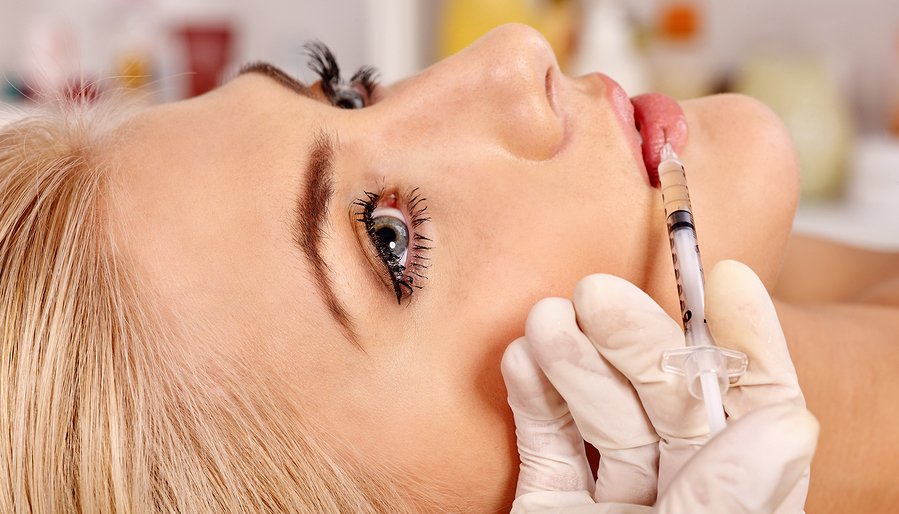Years ago, my husband was a consultant to a national plastic surgeons’ association, and the stories he brought home were worthy of a prime-time miniseries. Faces being peeled off and stuck back on, surgeons performing breast augmentations on their own teenage daughters, and miscalculations that left patients ugly and deformed. The experience certainly convinced me to just live with my oversized and undersized features, beauty be damned. But then again I do not represent the 17.1 million people in the US in 2016 who opted to go under the plastic surgeon’s knife for one reason or another, nor the ever-growing segment of the population who will get cosmetic surgery in the next few years.1 “Plastic Surgery Statistics Report: 2016.” American Society of Plastic Surgeons. 9 June 2017. http://d2wirczt3b6wjm.cloudfront.net/News/Statistics/2016/plastic-surgery-statistics-full-report-2016.pdf
Since 2000, the number of annual plastic surgery procedures performed in the US has increased by at least 115%. And that giant spike doesn’t simply represent a huge surge in older women having facelifts. In fact, facelifts aren’t even among the top five cosmetic surgeries anymore. This new era of cosmetic surgery looks very different than it did in the past. Some of the trends might surprise you.
- The most common procedure now is breast augmentation, with 290,000 surgeries performed in 2016 alone. At this point, astonishingly, about one in every 20 women in the US has had an augmentation.2 http://www.pacificheightsplasticsurgery.com/breast-implant-statistics/ This figure only includes those wanting larger breasts for aesthetic reasons and excludes those undergoing breast reconstruction (another 109,256) after cancer surgery.3 “Facts About Breast Implants.” 2 July 2016. Our Bodies Ourselves. 9 June 2017. http://www.ourbodiesourselves.org/health-info/facts-about-breast-implants/ Unfortunately, half of those who undergo the augmentation will have local complications—including pain, hardening, infection, or need for another surgery—within three years. Add to that the fact that all implants will burst eventually, usually within about 10 years. They’ll need to be replaced via additional surgery. Meanwhile, silicone (if the implant is silcone-based) will likely leak into the women’s body, and the resulting risks are real.
While studies about health effects of long-term implants show mixed results, a few established facts certainly might provoke caution. First, in spite of the enhanced appeal women who get implants would be expected to experience, they commit suicide at three times the rate of the non-enhanced population.4 Davies, Madlin. “Women with breast implants are THREE times more likely to commit suicide and die from alcohol and drug use, study finds.” 6 August 2015. Daily Mail. 9 June 2017. http://www.dailymail.co.uk/health/article-3186950/Women-breast-implants-THREE-times-likely-commit-suicide-die-alcohol-drug-use-study-finds.html That’s not to imply that something in the implants causes suicide, but rather, that augmentation does not guarantee happiness—far from it. And, compared to other plastic surgery patients, they’re more likely to die from brain tumors, lung cancer, and respiratory diseases. They’re also two to three times more likely to report extreme fatigue, memory loss, joint and muscle aches, and if their implants leak, far more likely to develop fibromyalgia. Finally, there’s some evidence that bacterial contamination in implants increases breast cancer incidence.5 Mann, Denise. “Predictions, Predictions…Experts Foretell the Top Plastic Surgery Trends for 2017.” 5 January 2017. Zwivel. 9 June 2017. http://www.zwivel.com/blog/2017-plastic-surgery-trends/
- If you can’t enhance ‘em, lift ‘em. As mentioned above, facelifts no longer rank high in the list of cosmetic surgery procedures, but procedures for other types of lifts are increasing exponentially. Breast lifts have increased by 89 percent since the year 2000, with almost 100,000 such procedures performed in 2015. These surgeries will probably have to be repeated, as gravity inevitably leads to more sagging over time. If the patient maintains steady wait, the lift can last as long as 15 years, but if there’s wait gain or loss, it might take only a few years before another lift is in order. As with other cosmetic surgeries, there are myriad risks involved, from infection to problems with anesthesia to hematoma formation to cardiac arrest to botched work that leaves the breast without any nipple at all.
- Bottom surgeries are increasingly common. While once relatively rare, a startling number of patients now are having their buttocks reworked. In fact, by 2015, a buttocks procedure was completed every 30 minutes in the US. Buttocks lifts rose by 36 percent in the one year between 2014 and 2015, and by 252 percent since 2000, while buttocks implants increased by 36 percent between 2014 and 2015, and augmentation with grafted fat went up by 28 percent. According to the website of the American Society of Plastic Surgeons, buttocks surgeries help “to increase fullness, roundness and projection of your butt or buttocks, improve the balance of your figure, and enhance your self-image and self-confidence.” 6 http://www.plasticsurgery.org/cosmetic-procedures/buttock-augmentation Who knew? Maybe if you ditch the psychotherapy and spend that $5000 to $10,000 getting a bigger butt instead, all your insecurities will vanish. The usual cosmetic surgery risks apply, plus the possibility of incurring nerve damage, clots, and sciatic problems.
- Botox is omnipresent. If you include non-invasive procedures in plastic surgery data, Botox leads as the most common treatment for both men and women. An astounding 64 percent of women under the age of 35 have received Botox injections at an average cost of $385 a pop.7 http://www.123dentist.com/your-ultimate-guide-to-botox-from-123dentist-com/ About 6.7 million Botox injections were delivered in 2015. Add to that 2.4 million treatments with soft-tissue fillers like collagen. About 66 percent of those who had a Botox injection will get another one or two before the year ends, since treatment only lasts about four months. While lots safer than the check-into-the-hospital surgical alternatives, Botox does incur risks including headache, nausea, pain and bruising, and the possibility of systemic spread with resulting breathing problems, unknown nerve effects, slurred speech, vision problems, and loss of bladder control. And no less important, studies have shown that botox injections limit a person’s ability to make full facial expressions. This not only effects how they feel their own emotions, but also how empathetic they are with others.8 David A. Havas1 and James Matheson. “The Functional Role of the Periphery in Emotional Language Comprehension.” Front Psychol. 2013; 4: 294. http://www.ncbi.nlm.nih.gov/pmc/articles/PMC3664318/
- Men are a big market. The number of men who had Botox injections has increased by 337 percent since 2000, with almost half a million male customers in 2015 alone. Men are also big consumers of breast reduction surgery, now constituting 40 percent of that market, with 27,456 breast reduction surgeries performed on men in 2015.
- Labiaplasties on rise. This is a procedure that reduces tissue on a woman’s vulva. While a few women opt to have this surgery because of vaginal discomfort, 87 percent do it for cosmetic reasons, and the trendy procedure is becoming increasingly common.9 Holloway, Kali. “The Labiaplasty Boom: Why are Women Desperate for the Perfect Vagina?” 13 February 2015. AlterNet. 9 June 2017. http://www.alternet.org/news-amp-politics/labiaplasty-boom-why-are-women-desperate-perfect-vagina Last year, there were 39 percent more labiaplasty operations than in the preceding year, with 12,000 surgeries on the books in the US in 2016.
- Plastic surgery can be fatal. And now let’s talk about the elephant in the room–death. One in every 1000 facelift patients dies from the procedure, as does one in every 5000 liposuction patients. Tummy tucks are far more lethal, with a death rate of one in every 600. Breast augmentations are comparatively safe, with “only” one in every 10,000 resulting in patient death. And as a side note, a nesthesia alone kills about one in every 13,000 patients.
In spite of the risks, plastic surgery is ever-more popular. Americans spent $16 billion on cosmetic plastic surgeries and minimally invasive procedures last year, and the industry just keeps growing annually. Perhaps there would be less enthusiasm for body reconstruction if the public had to sit through some of the videos and slide shows my husband watched back in his days with the AARPFS, complete with the stories of how very wrong things sometimes turned out. Or not.
References
| ↑1 | “Plastic Surgery Statistics Report: 2016.” American Society of Plastic Surgeons. 9 June 2017. http://d2wirczt3b6wjm.cloudfront.net/News/Statistics/2016/plastic-surgery-statistics-full-report-2016.pdf |
|---|---|
| ↑2 | http://www.pacificheightsplasticsurgery.com/breast-implant-statistics/ |
| ↑3 | “Facts About Breast Implants.” 2 July 2016. Our Bodies Ourselves. 9 June 2017. http://www.ourbodiesourselves.org/health-info/facts-about-breast-implants/ |
| ↑4 | Davies, Madlin. “Women with breast implants are THREE times more likely to commit suicide and die from alcohol and drug use, study finds.” 6 August 2015. Daily Mail. 9 June 2017. http://www.dailymail.co.uk/health/article-3186950/Women-breast-implants-THREE-times-likely-commit-suicide-die-alcohol-drug-use-study-finds.html |
| ↑5 | Mann, Denise. “Predictions, Predictions…Experts Foretell the Top Plastic Surgery Trends for 2017.” 5 January 2017. Zwivel. 9 June 2017. http://www.zwivel.com/blog/2017-plastic-surgery-trends/ |
| ↑6 | http://www.plasticsurgery.org/cosmetic-procedures/buttock-augmentation |
| ↑7 | http://www.123dentist.com/your-ultimate-guide-to-botox-from-123dentist-com/ |
| ↑8 | David A. Havas1 and James Matheson. “The Functional Role of the Periphery in Emotional Language Comprehension.” Front Psychol. 2013; 4: 294. http://www.ncbi.nlm.nih.gov/pmc/articles/PMC3664318/ |
| ↑9 | Holloway, Kali. “The Labiaplasty Boom: Why are Women Desperate for the Perfect Vagina?” 13 February 2015. AlterNet. 9 June 2017. http://www.alternet.org/news-amp-politics/labiaplasty-boom-why-are-women-desperate-perfect-vagina |












Less that an hour ago, I
Less that an hour ago, I cancelled a surgery for drooping eyelids (pitosis). I find that if I concentrate on lifting my eyelids myself, I can look as well as I would with surgery. And, I’ve been told that at 78, I might have to have the procedure performed again in my lifetime. Wish me luck in keeping my eyes wide open!!
Thank you for your products (Glucotor for me) and your constant clarity about health for me and my family and friends.
John
nice article.
nice article.
but i want to ask that is there any kind of side effect of this surgery, and if any then that side effect is for how much period. and how much maximum cost for this surgery.
thanks for sharing this article